By Hugo Pratt (NBM)
Book 1 THE BRAZILIAN EAGLE, Book 2 BANANA CONGO, Book 3 VOODOO FOR THE PRESIDENT, Book 4 A MID-WINTER MORNING’S DREAM, Book 5 CORTO MALTESE IN AFRICA, Book 6 CORTO MALTESE THE EARLY YEARS
ISBNs vary so crank up that search engine…
Hugo Pratt is one of the paramount comics creators, and his creations since ‘Ace of Spades’ (whilst still a student at the Venice Academy of Fine Arts) in 1945 are both many and varied. His most famous character, based in large part on his own exotic early life, is the mercurial soldier – perhaps sailor would be more accurate – of fortune, Corto Maltese.
After working in both Argentinean and English comics for years he returned to Italy in the 1960s. In 1967 he produced a number of series for the monthly comic Sgt. Kirk. In addition to the Western lead character, he created a pirate strip Capitan Cormorand, the detective strip Lucky Star O’Hara, and a moody South Seas adventure called Una Ballata del Mare Salato (A Ballad of the Salty Sea). The magazine folded in 1970, but Pratt took one of Ballata‘s characters to the French weekly, Pif, before eventually settling into the legendary Belgian Tintin. Corto Maltese proved as much a Wild Rover in reality as in his historic and eventful career.
These adventures have been collected many times and in many languages, but I’ll deal with the editions produced by Nantier-Beall-Minoustchine in mid-1980s. The company has long specialized in bringing European comic classics to the English speaking world.
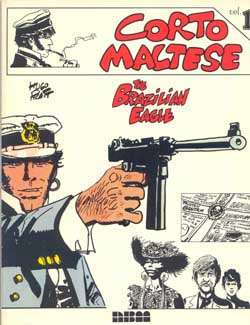
The Brazilian Eagle begins in 1913 with ‘The Secret of Tristan Bantam’. The evocative, sultry Caribbean is the setting as laconic sea captain Maltese meets the dissolute Professor Jeremiah Steiner and becomes embroiled in a treasure hunt involving a young boy and the last outpost of the lost empire of Mu. Amid much bravado and skullduggery the trio team up to search for the mythic city, and also the boy’s half-sister Morgana, freshly revealed, and hidden somewhere on the South American mainland.
The quest continues in ‘Rendez-Vous in Bahia’ and ‘Sure Shot Samba’, as they discover the exotic secrets of the native peoples, the derelict men of western civilisation and the inevitable ne’er-do-wells that inhabit every port and village. They promptly become involved in various native revolutionary movements. Tristan finds Morgana in the eponymous final story, a tale of political intrigue as the colonial powers Great Britain and Germany square off in Brazil, in the inevitable lead-up to the Great War.
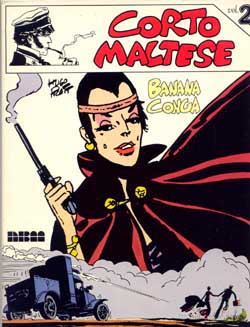
Banana Conga also collects four tales. ‘So Much for Gentlemen of Fortune’ has the trio search for pirate gold; ‘The Seagull’s Fault’ where a wounded and amnesiac Maltese encounters the last descendents of an infamous bandit; ‘Mushroom Heads’ returns him to the theme of lost cities and treasure, as Amazonian head-hunters’ mushrooms restore Corto’s memory, and the final adventure introduces the ruthlessly amoral Venexiana Stevenson, a double-dealing spy for hire involved in a battle between White governments, oppressed natives and a North American Banana company.
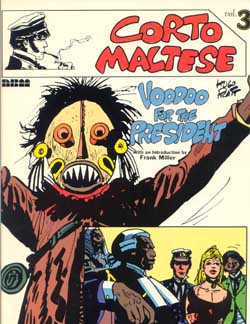
The third volume starts with ‘Voodoo for the President’ as our heroes fall foul of a power-play in Barbados. Reunited with the sultry Soledad Lokaarth (last seen in ‘The Seagull’s Fault’) when she is tried for witchcraft, they must foil the ambitions of an evil lawyer intent on taking over the country. ‘Sweet Dream Lagoon’ is a small, lyrical masterpiece, devoted to the tragedy of a lost British Soldier, a deserter from the trenches who is destroying himself with guilt on the shores of a South Seas lagoon. ‘A Tale of Two Grandfathers’, set in Peru, features the quest to rescue a child who has been abducted by Jivaro head-hunters, after which this volume closes with a major shift in emphasis.
Throughout all his travels Corto Maltese has been searching for the treasures of the Seven Lost Cities of Cibola, a popular myth of Incan gold. With ‘The Angel in the Window to the Orient’, he follows a clue to Venice, and becomes involved, if only peripherally, and on his own terms, in World War I as he again encounters the she-devil Venexiana Stevenson.
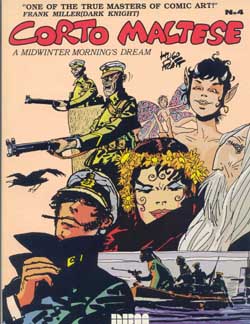
The fourth collection A Midwinter Morning’s Dream is exceptional, as Pratt seems to hit a fresh vein of creativity. Beginning with the gloriously engrossing ‘Under the Flag of Money’, a straight ‘caper’ story, Maltese organises a bi-partisan team of soldiers who desert from both sides of the conflict to steal millions in gold bullion. ‘Concerto in E Minor for Harp and Nitroglycerin’ is a tale of filial honour and betrayal set in Ireland during the 1916 rebellion. The title piece is a fantastic departure as Oberon, Puck, and a coterie of supporting fairies from Shakespeare’s play join Merlin the magician in manipulating our anti-hero into saving England from German invasion.
The combination of war, espionage and surreal fantasy continues with ‘Burlesque Between Zuydcoote and Bray-Dunes’ wherein the plot of an insane puppeteer and spy enables the artist to create some of his most strikingly powerful minimalist art, in the form of almost calligraphic images of shadows and silhouettes. And finally, a story of trench friendships reveals the ‘true’ story of the death of Germany’s greatest ace in ‘Red Baron and Red Burgundy’.
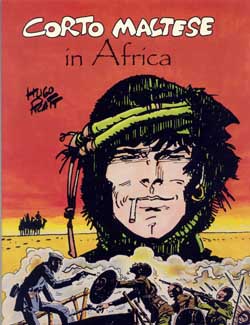
Corto Maltese in Africa is a much more traditional adventure chronicle as he works his way down the continent from Yemen to German East Africa (Tanganyika) between 1916 and 1918. On his eventful way he meets a host of historical figures and thinly disguised archetypes in four stories of death, honour, betrayal and pride. ‘In the Name of Allah the Merciful’ introduces him to Cush, a devout and charismatic follower of “The Mad Mullahâ€; ‘The Coup De Grace’ pits them both against a dissolute British officer hiding a dreadful secret; ‘More Romeos, More Juliets’ embroils them in the machinations of wizards and wife-stealers and a potential Abyssinian civil war before ‘The Leopard-Men of the Rufiji’ shows them what jungle justice means when the Great Powers make war.
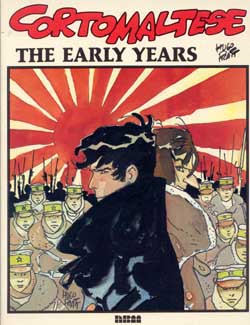
Corto Maltese: the Early Years is an oddity. Not only because it’s the only album in colour or that it’s one extended story, but because the settings and characterisation are dealt with in a much more intense, almost documentary manner. Set during the Russo-Japanese War of 1904 it provides an origin for Maltese’s long-time “arch-enemy†Rasputin, and focuses on the war correspondent and novelist Jack London. As the greater conflict ends London falls foul of a Japanese officer and has to fight a duel that nobody, especially both participants, actually wants to occur, but which nothing seems capable of preventing.
Once again the effects of war, pride and honour on great men and ordinary people is stirringly depicted and the observations on the origins and causes of evil deeds is fascinating. Why is it an oddity? Well, despite being a presence throughout the tale, much like Beckett’s Godot or more accurately Harry Lime in The Third Man, Corto Maltese only appears at the end and is drawn in only 25 panels.
Hugo Pratt is a consummate story-teller with a unique voice and a stark graphic style that should not work, but so wonderfully does. He combines a relentlessly modernistic narrative style with memorable characters, often complex whilst still bordering on the archetypical. By placing a modern, morally ambivalent anti-hero in a period where old world responsibilities should make him a scoundrel and villain, yet keeping him true to an utterly personal but iron-clad ethical integrity that goes beyond considerations of race, class or gender he has created a yard-stick with which we cannot help but measure all heroes. As empires fade and colonies fall Corto Maltese deals with and is moved by people, not concepts or traditions. He is also a whimsical man of action and a faithful humanist with a talent for being in the wrong place at the right time.
These are truly unforgettable comics to read, and I hope you can find them, especially in the language of your choice, since the only complaint that I can muster is that the actual dialogue of this English translation can be a little stiff and lack-lustre in places. Let’s hope someone’s got the skill and opportunity to get these classics back into print in suitable fashion.
© Casterman, Paris-Tournai 1978, 1979, 1980, 1983. All Rights Reserved
English translation © NBM 1986, 1987, 1988.
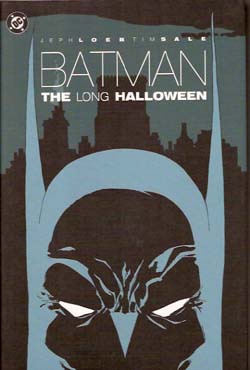 Â
 
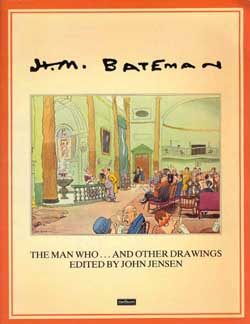 Â
 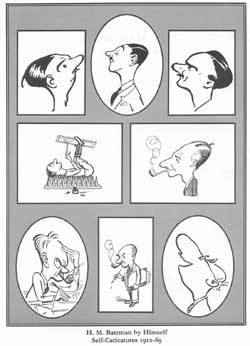
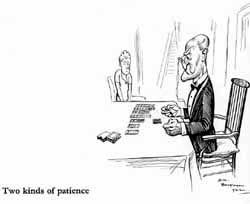
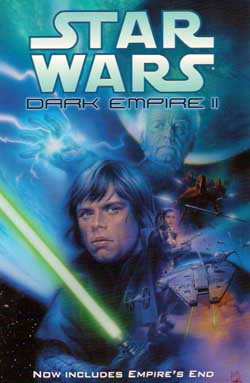 Â
 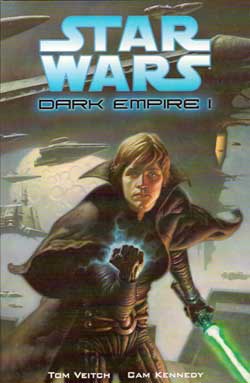 Â
  Â
 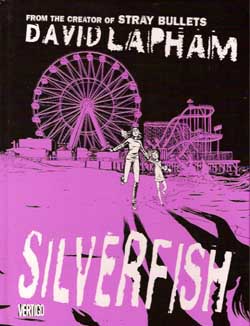 Â
 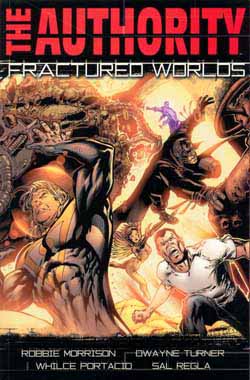 Â
 





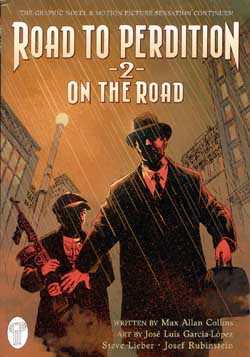 Â
 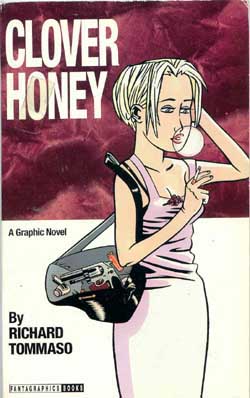 Â
Â